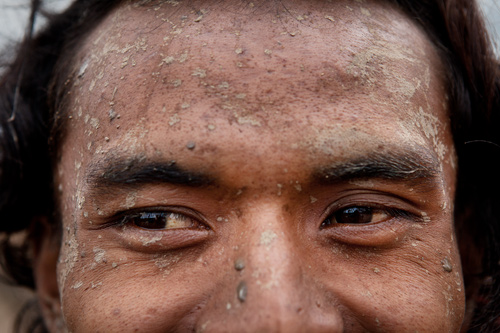A picture is worth a thousand words. Yes, you've heard it, and I've heard it too. But now a picture is also worth a thousand dollars. If you're smart enough, in today's not-so-nice situation for emerging photographers, you still can sell a photograph for that amount. But here I'm not talking about that. Instead, by saying "a picture is worth a thousand dollars" I'm talking briefly of how a photograph can actually help a community to maintain their tradition. And they are the people of Tanah Datar, who held Pacu Jawi (you can read my description here). The famous Indonesian bull's racing in West Sumatra.
Yesterday, I visited Tabek to shoot Pacu Jawi for the countless times. This village is somehow really special for me since this was the place where I did the Community Development Participation (Kuliah Kerja Nyata or KKN) during my college years in back in 2005. Here, I experienced one of the most happiest moment in my life: shared a real life with villagers for two months. So when a good friend from Tabek called me few days ago telling Pacu Jawi will be held there, I felt like I was facing an offer I can't refuse (citing The Godfather). Departing from Padang, I accelerated my car passing the winding road that decorate the land of Minangkabau.
"If you're visiting, you're guaranteed a tasty local food and the sweet 'kawa' without having to be ripped off."
What I found surprised me. Pacu Jawi today, is being celebrated more than ever before. Three years ago, when I first shot Pacu Jawi, there were only very few outsider watching the raging bulls running through the wet unplanted ricefield. Most people were locals. But then, there were more and more outsiders came, especially after the photographs of Pacu Jawi were published widely (almost all were done by local photographers and you can see my first photo of the festival
). Yesterday there were two Indonesian national TV (with their beautiful hosts), a horde of photographers, and tourists. This is good!!
The more ousiders come, the more of the local economy will develop (it's pretty obvious, so I actually don't need to tell you this). In Pacu Jawi, locals sell anything from foods to toys. If you're visiting, you're guaranteed a tasty local food and the sweet kawa (like coffee but different) without having to be ripped off. And I can see that they are started making good business. By looking at this I couldn't be happier.
So be sure to spend some of your money here.
P.S: If you're a photographer, the local usually will also ask you to register as a guest. They will ask you for some donation too. Please kindly fill the box as you wish. Don't mind. This will go directly to the community and making sure the bulls keep running.
(Pacu Jawi is held almost every Saturday somewhere in Tanah Datar. The series in Tabek will be celebrated until early February 2012)
































